Indefatigable traveler Nikolai Mikhailovich Przhevalsky
From the age of eight, Przhevalsky mastered the letter, avidly read all the books that fell into his hands. In ten years, Nicholas was given to the Smolensk gymnasium. Study was easy for him, soon he became the first student in terms of academic performance. However, the knowledge gained at the Smolensk gymnasium was not enough for him. Later Przhevalsky recalled: “Despite the fact that I graduated with honors from the course, I will say that, truly, I took very little out of it. Bad teaching methods and a large number of subjects made it absolutely impossible to learn anything positively even with a strong desire ... ”.
After graduating from the gymnasium, Nikolay Przhevalsky, shaken by the heroic feats of the defenders of Sevastopol, decided to become a military man. Non-commissioned officer, he was sent to serve in the Ryazan Infantry Regiment. And on November 24, a seventeen-year-old youth was transferred to the twenty-eighth Polotsk Infantry Regiment, located in the county town of Bely, Smolensk Province. In his spare time, Nikolai studied nature, made long hikes through the local marshes and forests. During his stay in the Polotsk Regiment, he collected a herbarium of most of the plants growing in the Bely district. Soon he had obsessive thoughts about traveling to distant lands. They chased him day and night. Przhevalsky repeatedly told colleagues: "I certainly must go on an expedition." To this end, he began to scrupulously study the works of famous scientists in geography, zoology, botany.
Finally, Nicholas filed a petition for his transfer to Cupid. The answer of the heads was original - arrest for three days. After the incident, the young man chose a different path. He decided to go to study at the General Staff School, deciding that he could easily get an appointment to Siberia after graduation. The tremendous memory, dedication and preparation, which sometimes takes up to eighteen hours a day, allowed the village boy to easily pass the entrance exams. He was among the students of the Academy of the General Staff in St. Petersburg.
During his studies at the Academy, Nikolai wrote his first literary work. Under the title “Hunter’s Memory” it got into the pages of the magazine “Hunting and Horse Breeding”. In parallel with the military sciences, Nikolai Mikhailovich continued to study historyzoology, botany and geography. In the transition to the second course, I chose the Amur region as the theme for my essay. In his work he used both the works of famous researchers of the Amur region, and books on general geography. In conclusion of the report, Przhevalsky expressed curious thoughts about the geographical position and features of this region. The then well-known academician, economist and publicist Vladimir Bezobraz presented the Przhevalsky Military Statistical Review of the Primorsky Territory to the Russian Geographical Society. After studying this work 5 February 1864, Nikolai Mikhailovich was enrolled in the full members of society.
After graduating from the Academy, Przhevalsky was appointed adjutant to the commander of the Polotsk Infantry Regiment. Soon he was among the volunteers who went to Poland to suppress the uprising. And at the end of 1864, he was transferred to teach geography at the Junker School in Warsaw. Here the military officer met the famous ornithologist Vladislav Kazimirovich Tachanovsky, who taught him to stuff stuffed animals and dissect birds perfectly. And especially for the junkers, Nikolay Przhevalsky wrote a textbook on general geography, which for a long time served as a guide not only for domestic educational institutions, but also for many foreign countries.
In 1866, Przhevalsky filed a report on the transfer to Siberia. While waiting, he carefully prepared for his future journey. Finally, a positive response was received. At the end of January 1867, Przhevalsky drove to Petersburg and addressed the Council of the Geographical Society with a request to assist in organizing the expedition. However, he was refused. Petr Petrovich Semenov-Tyan-Shansky, who was the chairman of the Department of Physical Geography at the time, explained the reason for this: “Nikolai Przhevalsky was still a little known value in the scientific world. We did not dare to give him an allowance for the company, moreover, to organize an entire expedition under his leadership. Nevertheless, the traveler was promised that if he could do any research or discovery in Siberia with his own money, he could hope for the support of the Society and even the organization of an expedition to Central Asia under his leadership upon his return.
In May, 1867, Nikolai Mikhailovich Przhevalsky was sent on his first trip to Ussuri. He took as his assistant the topographer of the headquarters Yagunov, the sixteen-year-old son of the exiled settlement. He taught the young man to dry the plants, remove and dissect the skins of animals, perform all the numerous duties of travelers. On May 26 they left Irkutsk and set off for Amur through Transbaikalia. Przhevalsky set himself the task of exploring and describing the Ussuri region as fully as possible. At the same time, he also had specific instructions from the headquarters of the troops, according to which he had to gather information about the aborigines living along the Ussuri River and to study the routes leading to the borders of Korea and Manchuria.
The road to Blagoveshchensk took about two months. In Khabarovsk, Przhevalsky bought a boat and in every Cossack village that came across on the way he took rowers in his turn. Together with Yagunov, he himself moved along the river bank, collecting plants, shooting birds. He visited the camps of the aborigines of this region, watched as they fish with the fortress, hunt wild goats when they cross the river. All necessary notes traveler diligently described in the travel diary. The diligence of the "master" officer was astonishing to the Cossacks. The distance from Khabarovsk to the village of Busse Przhevalsky traveled on foot in twenty-three days. From Busse Nikolai Mikhailovich moved to the lake Khanka, whose expanses of water made a big impression on him. Throughout August, the researcher lived on the banks of the reservoir: he hunted, collected plants, and carried out meteorological observations three times a day. In mid-September, he traveled south to the shores of the Sea of Japan. On the shores of Posyet Bay, he met Koreans who had fled from their masters and found refuge in neighboring Russia. In order to get to know the life of this people, Przhevalsky together with a translator and three oarsmen arrived at the border village of Kygen-Pu. However, the head of the town refused to talk about his country and ordered the travelers to return to Russia. Seeing the senselessness of further conversations, the detachment returned to the Novgorod post in Posiet Bay.
After this, Przhevalsky decided to explore the depths of the Ussuri region. Taking two soldiers and the faithful Yagunov, he set off on a path that no one from Europeans had previously taken. By the time the frost began. Sleep often had right in the snow. In order to make entries in the diary, it was necessary to heat the ink on the fire. New Year squad met among the deep snowdrifts in the taiga. That day Przewalski wrote: “In many places they will remember me today. But, no fortune telling will tell where I am now. The places where I wandered, the devil himself doesn’t know. ” Winter transition ended 7 January 1868 of the year. The expedition, passing along the coast of the Sea of Japan and along the Tadush river, crossed the Sikhote-Alin and set out on the Ussuri River near the village of Busse. The path traveled along the pack trail was about 1100 kilometers. Spring 1868 of the year Nikolay Przhevalsky spent on Lake Khanka, where he observed massive bird flights, lotus blooms and love games of cranes. However, Przhevalsky's research was interrupted by an attack on the southern Primorye of the Hunhuz gang. They killed civilians, burned three Russian villages and two posts. Przhevalsky, a military officer and a skilled archer, took an active part in the destruction of bandits, for which he was presented to the rank of captain. And soon he was transferred to Nikolaevsk-on-Amur and appointed a senior adjutant of the headquarters of the troops of the Amur Region. Here, in his free time, the naturalist processed the materials collected by the expedition. Only in February of 1869 did he receive permission to return to his research. In spring and summer, he again spent on Lake Khanka, which he was fond of, studying the rivers flowing into it. And at the end of the year I went to the northern capital.
In the Russian Geographical Society, Nikolai Mikhailovich was met as a research scientist who made a significant contribution to the study of nature, climate, flora and fauna of the Ussuri region, as well as occupations and everyday life of the local population. For two years, he, as a passionate hunter, has assembled a collection of XDUMX bird effigies. In total, Przhevalsky counted 310 bird species, of which 224 had not previously been noted in these territories, and some are completely unknown to science. At Ussuri, Nikolai Mikhailovich was the first to see and describe a black hare and a rare plant - dimorphant or white walnut. He brought with him to Petreburgh more than 36 plant species (two thousand specimens), 300 bird species (total 42 pieces), 550 species of various seeds, and more than a dozen mammals. Two years of hiking, a kind of "exam for the traveler," Przhevalsky endured brilliantly. His lectures usually ended with applause. And for the report on the population of Primorye, the naturalist was awarded the Small Silver Medal. In August, 83 was published his first book, Journey to the Ussuriysk Territory, which brought Przhevalsky fame outside the narrow circle of geographers.
In 1870, with the support of the Russian Geographical Society, the traveler went on his first expedition to Central Asia. November 17 his squad camel left the city of Kyakhta. Przhevalsky’s first assistant was Lieutenant Pyltsa, except for him Buryats Dondok Irinchinov and Cossack Panfil Chebaev participated in the campaign. Their path passed through the city of Urga (now Ulaanbaatar) and the endless Gobi desert to distant Beijing. From there, through Alashan, Gobi and the height of Nan-Shan, the expedition reached the headwaters of the Yellow River and the Yangtze and found itself at Tibet. Then the travelers crossed the Gobi, the central part of Mongolia, and returned to Kyakhta. When crossing the desert travelers did not have enough water and food, they ran out of money. Pyltsov fell ill with typhus, but continued the campaign. Meeting the 1873 year, Nikolai Mikhailovich wrote in his diary: “We are experiencing terrible hardships that must be endured in the name of a great goal. Will we have enough will and strength to end this glorious business? ”
All members of the expedition had the skills and strength. The trip lasted for almost three years, during which time twelve thousand kilometers were traveled, and most of the way the travelers went on foot. Przhevalsky left a note about his comrades: “Far from our homeland, we lived like siblings. Shared work and danger, grief and joy. I will save grateful memories of my companions to the grave, immense courage and devotion to the cause of the entire success of the enterprise. ” As a result of this campaign, significant changes occurred on the map of Central Asia - 23 new ridge appeared, 7 of large and 17 of small lakes. In addition, the height of many passes was determined, the exact locations of the villages were determined, collections of mammals, birds, fish, insects (more than 3000 specimens), plants (about 4000 specimens), and rock samples were collected. It is necessary to emphasize the friendly attitude of researchers towards the local population. Travelers won the hearts of residents with a sympathetic attitude and drug help. For successful treatment of malaria patients, Dungans called Przhevalsky the “Great Doctor”. The Russian Geographical Society awarded Nikolai Mikhailovich a gold medal. He presented the results of his first expedition in the essay Mongolia and the Country of the Tangut. The book was translated into different languages of the world, and many foreign geographic societies sent their Przhevalsky their medals and certificates recognizing the merits of the Russian naturalist.
Meanwhile, the scientist himself was preparing for a second campaign in Central Asia. 12 August 1876, along with nine satellites, he hit the road. Their route stretched from the town of Gulja up the banks of the Ili River, and then through the Tien Shan to the mysterious Lob-nor Lake. This expedition was also very difficult, the health of Nikolay Mikhailovich was shaken. Travelers planned to get to Tibet in Lhasa. However, the scientist's illness, lack of water and, most importantly, complications in the Russian-Chinese relations, led to the fact that the participants of the campaign together decided to return to Gulja. Despite the failure, the expedition still did a great job. 1200 kilometers of way were captured by eye survey and valuable collections of birds and animals were collected. The skins taken from four camels, previously known only from the records of Marco Polo, were brought. Of great importance was the information about the inhabitants of this area. Travel details Przhevalsky described in the book "From Gulja to Tien Shan and Lob-Nor." Nikolai Mikhailovich was elected an honorary member of the Russian Academy of Sciences. The London Geographical Society honored the naturalist with the Royal Medal, and the Berlin Geographical Society awarded the Humboldt Big Gold Medal. All this meant his worldwide recognition as an outstanding scientist and traveler.
Diseases made Nikolay Mikhailovich stay in Russia until the spring of 1879. This time he devoted to preparing for the journey to Tibet. A squad of thirteen people left the Zaisan Post on March 21. Together with people this time 35 camels, loaded with food and water. The expedition moved through the deserts and steppes of Dzungaria. Here the scientist discovered a wild horse, which would later be called Przhevalsky's horse. Further the way of the detachment passed through Nan-Shan. In its western part, two high snow-covered ridges were discovered, which were given the name Ritter and Humboldt ranges. The difficulties of this campaign were expressed in the fact that the Chinese authorities refused to allow the wanderers to sell provisions and did not allow to take guides. Nevertheless, the expedition successfully reached the main Tibetan road leading to Lhasa. Along the way, travelers discovered another unknown hitherto ridge, named after Marco Polo. The detachment climbed the icy paths to the pass of the Tangla ridge. Here they were suddenly attacked by a nomadic North-Tibetan tribe of agrai, robbing passing caravans. However, the Russian travelers were too tough for the local highlanders. And this, and all subsequent attacks were repulsed. It seemed that the path to the heart of Tibet was open. But in 250 kilometers from Lhasa, the detachment was met by ambassadors of the Dalai Lama, who transmitted a written order that forbade them to visit the city because they belonged to a different faith. “At that moment, when all the hardships of a long journey were overcome, and the likelihood of reaching the goal of the expedition turned into confidence of success,” Nikolai Przhevalsky wrote with chagrin, “we could not get to Lhasa: human barbarism and ignorance put insurmountable obstacles!”. The caravan moved in the opposite direction. But now people were discouraged and tired, horses and camels were also exhausted and exhausted. 31 January 1880, the squad returned to Zun, from 35 camels only 13 completed the transition.
After resting, Przhevalsky moved to the Yellow River and explored it for three months. Then he reached Lake Kukunor and plotted its outlines and sizes, determined that twenty-five rivers flow into it. Then the travelers returned to Kyakhta via Alashan and Gobi. In total, they traveled about 7200 kilometers, found a road to Lhasa, located twenty-three geographical locations, discovered 5 lakes, new species of animals and plants. In St. Petersburg, the expedition participants waited for a solemn meeting. Moscow University elected Przhevalsky as honorary doctor of zoology, the Russian Geographical Society as an honorary member, the cities of Petersburg and Smolensk as an honorary citizen. He was also elected to the honorary members of the Dresden, Italian and Vienna geographical societies. Having received a huge amount of grateful reviews and degrees after the journey, Nikolai Mikhailovich, due to his natural modesty, retired to the village where he processed the collected material. The results of the campaign, he stated in his next book, "From Zaisan through Hami to Tibet and on the headwaters of the Yellow River."
However, uncharted land still attracted the famous traveler and his companions. October 21 1883 Przhevalsky left Kyakhta on his fourth trip to Asia. His goal was unknown Tibet. At this time, the path passed through the steppes of Mongolia, the Gobi and Alashan Desert, the North-Tatung Range. Again, despite the obstacles of Chinese bureaucrats, Przhevalsky reached the origins of the Yellow River, discovered two lakes: Jarin-Nur and Orin-Nur. Then the travelers turned to Lob-Nor lake, the path to which was blocked by the Altyntag ridge. After a long search, the participants of the campaign found a passage through the mountains. The inhabitants of Lob-Nora greeted the expedition very warmly. From here Przhevalsky turned to the south-west and discovered unknown ridges, called Russian and Keriy. Two years later, at 1885, the work was completed. The expedition covered about eight thousand kilometers. In honor of Przhevalsky, by decision of the Academy of Sciences, they knocked out a gold medal with the inscription: “To the first researcher of the nature of Central Asia”. By this period, Nikolai Mikhailovich was already in the rank of Major General, was the owner of 8 gold medals, an honorary member of the 24 scientific communities. After his expeditions, the white spots on the maps of Central Asia disappeared one by one.
For those who personally knew the outstanding scientist there was nothing strange in the fact that in the incomplete 50 years he began to prepare for the fifth campaign in Central Asia. The purpose of this expedition was the "promised" city of Lhasa. This time an official pass was received for his visit. At the end of 1888, the training was finally completed. Karakol was chosen as a meeting place. However, the journey was not destined to take place. On the way to this Kyrgyz city in the valley of the river Kara-Balta Nikolay Mikhailovich decided to hunt. Slightly chilled, he drank river water and picked up typhoid fever. Upon arrival in Karakol traveler sleg. Suffering from the disease, he did not lose heart, he bravely, consciously said that he was not afraid of death, because he had been face to face with her many times. October 20 1888, a great scientist, patriot and traveler, died at the hands of his friends.
Before his death, Przhevalsky asked to be buried on the shores of Issyk-Kul in his hiking clothes. The testament of the deceased executed. On the eastern shore of the lake, twelve kilometers from the city in two days (due to the hardness of the ground), a grave was dug out. The coffin was delivered on the gun of a field gun. Accompanying people walked around on foot, and soldiers were lined up near the grave. A big black cross with a small plate was erected over the grave, on which, at the request of Nikolai Mikhailovich himself, they made a simple inscription: “The Przhevalsky Traveler”. A few years later a monument was erected at this place. On a granite block stands a bronze eagle ready to break, holding an olive branch in its beak, as a symbol of greatness and glory of a brave explorer, always inexorably marching forward to his dream.
Nikolai Przhevalsky has become an example for many generations of travelers and scholars around the world. It is still very difficult to explain how this person, with very serious, time-consuming and laborious work, with all the difficulties he encountered in Asia at every step, could so brilliantly carry out the tasks of a naturalist. In any conditions, every day Przhevalsky kept a diary, which formed the basis of all his books. In adulthood, Nikolai Mikhailovich was absolutely indifferent to titles, ranks and awards, preferring the solitary life of a wanderer to all the benefits of civilization. He owns wonderful words: "The world is beautiful because you can travel."
According to the book MA. Engelhardt "Nikolai Przhevalsky. His life and travel "
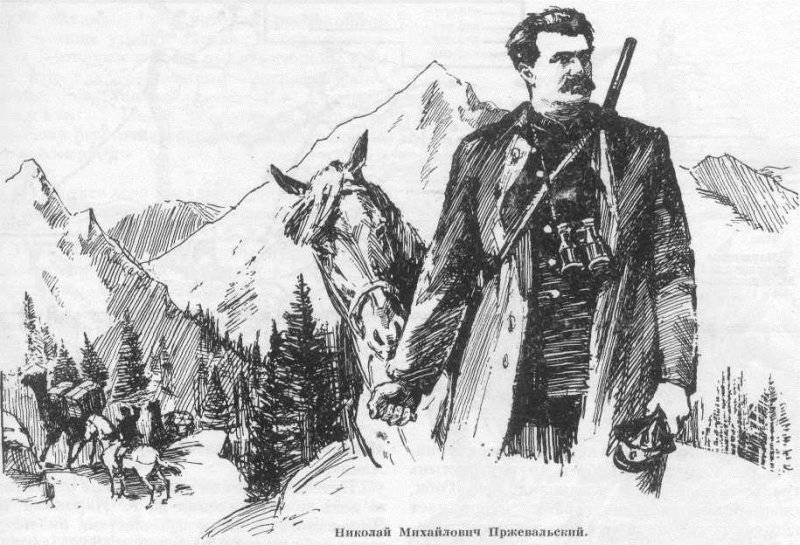
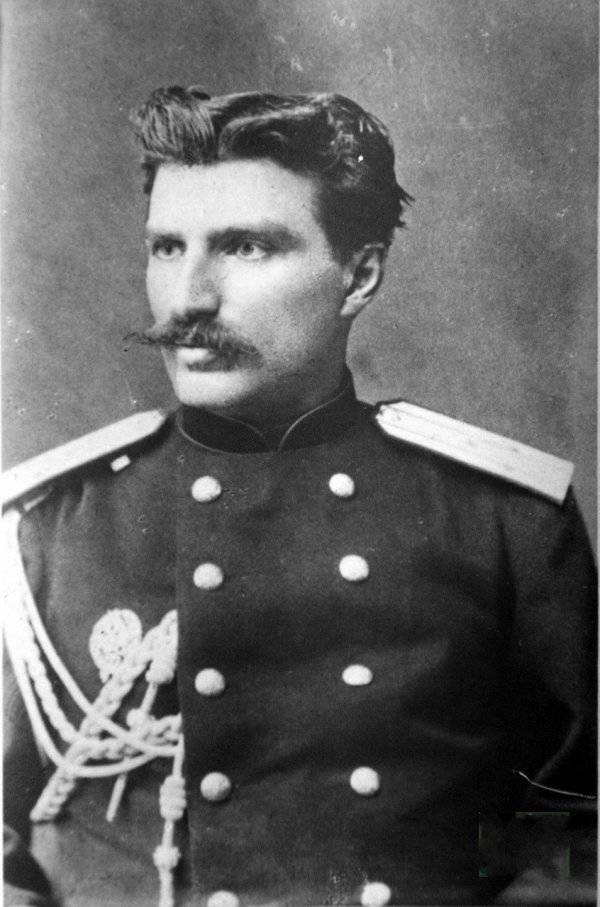
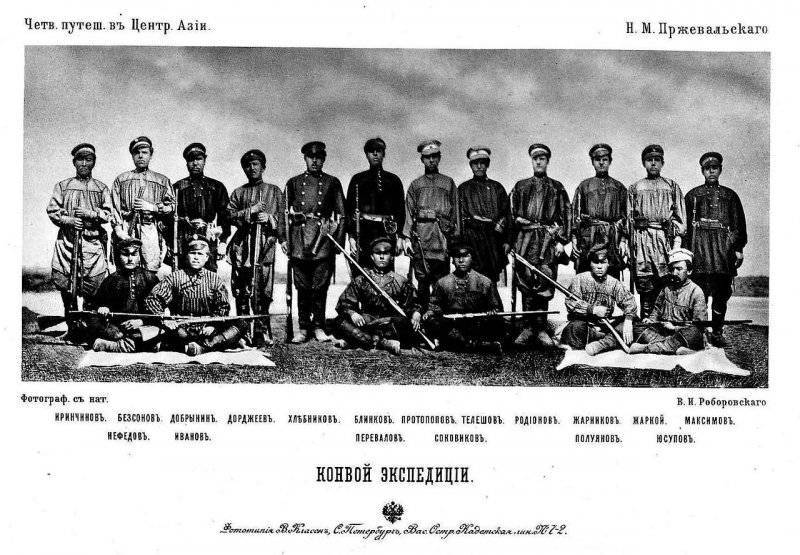
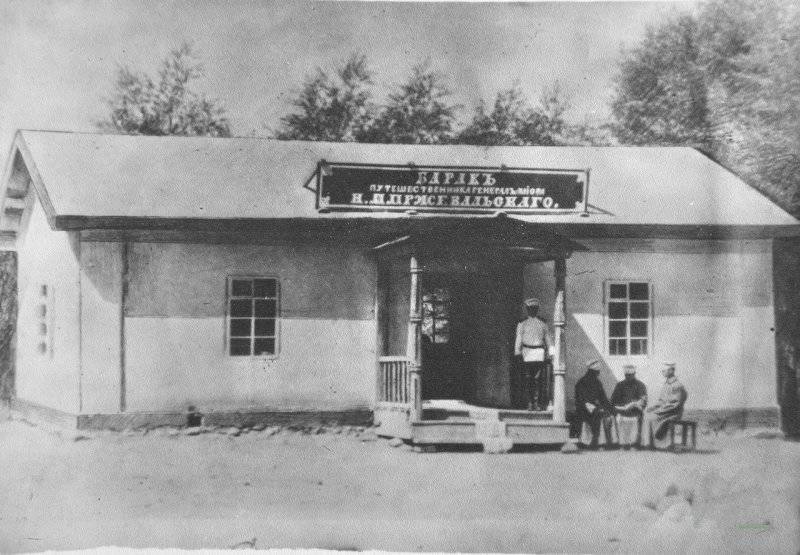
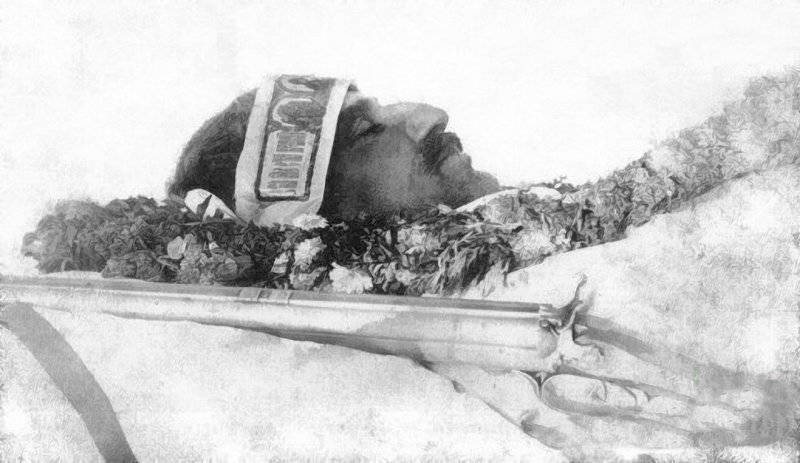
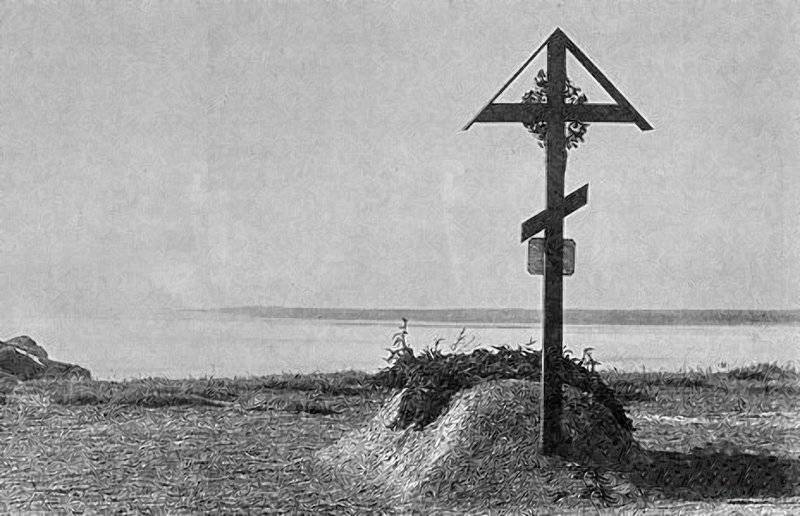
Information